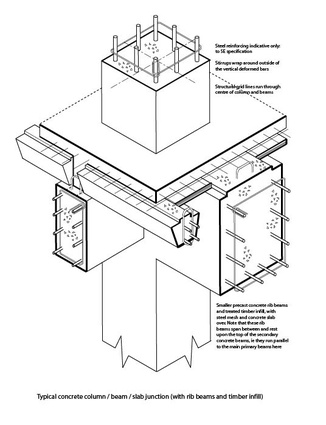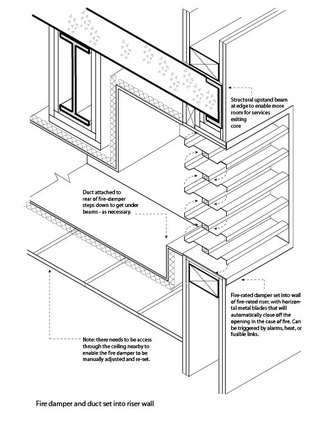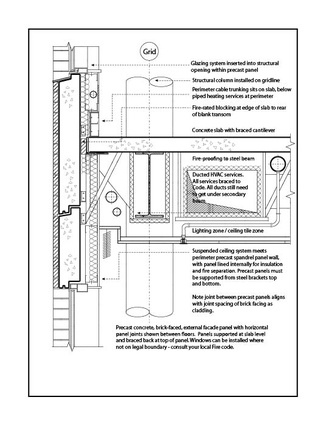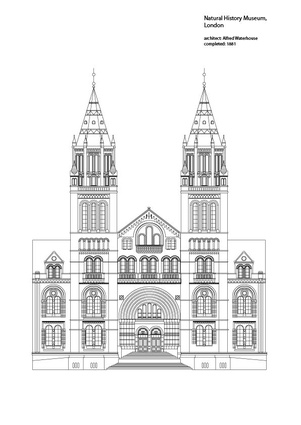Review: Tall: The design and construction of high-rise architecture
Mott MacDonald’s Advanced Computational Design Lead, Maria Mingallon, reviews Guy Marriage’s book on the design and construction of tall buildings.
Designed to help those in the industry anticipate design ‘traps’ they might not know about before falling into them, this book is full of ‘lessons learned’, an invaluable collection of tips and tricks from reputed architects and engineers who have built extensively, both in New Zealand and internationally. As its author/editor Guy Marriage puts it: “Knowledge is power, and so the control of the knowledge on a project is a very powerful role. Know how, but also know why.”
Unlike some other books on this subject, Marriage, a senior lecturer at Victoria University of Wellington’s School of Architecture, does a fine job of tackling highly technical matters with his customary fresh and down-to-earth prose. It is both accurate in the use of technical terms and yet extremely easy to read and understand. The book has just won the ‘Most Promising New Text Book Award’ for 2020 from the Textbook and Academic Authors Association, an international body which recognises excellence in 1st edition textbooks and learning materials published by authors worldwide.
Divided into 18 chapters, Marriage is joined by contributors Nabil Jose Allaf, Gerard Finch, Lauren Hayes and John Sutherland in covering everything from site, structure, foundations and core, through to floors, services, ceilings, façades and deconstruction. The book does a marvellous job at discussing the structural advantages and disadavantages of using one material versus another. Out of the three chapters dedicated to materials, one discusses the increased use of timber in tall buildings around the world. It points to a promising future for a material often neglected when building tall and is an area in which Marriage plans to expand in his sequel, tentatively named Taller: the Design of Modern Apartment Buildings, which will focus on building from mass timber construction.
Tall’s pages are filled with rules of thumb and span-to-depth ratios, providing an easy go-to reference for design meetings. Included is a rough guide for steel beams, which structural engineers employ when providing preliminary sizes. Based on the L/20 span-to-depth ratio, it also comprises a table with the most frequent structural grid layouts and associated beam depths. For a structural grid of 9m for example, a steel beam to span that distance will be 450mm deep, for a 12m span its depth will generally be increased to 600mm. Additional tables provide the tonnage associated with most frequent steel beam sections for given span and depth combinations.
Successful buildings start with thorough consideration of both the planning and the structural grids. Virtually all subsequent design decisions will depend on this often undervalued consideration. Marriage takes the time to explain the logic behind those column grid layouts which have proven most successful in tall buildings, once again equipping his readers with not just the ‘how’ but, also, the ‘why’.

By way of an example: the structural grid is the distance at which the primary structure will be spaced in plan. The planning grid determines the spacing for people and functions operating within the building, such as how the desks will be spaced. Ideally, the planning grid is a multiple of the structural grid… but which one? Marriage elaborates on the key to deciding on a successful planning and structural grid, which turns out to be how easy it is to sub-divide and scale-up the module. He recommends 1.5m as an optimal module, as it is both the typical desk length and easily divisible into 2 slices of 750mm, which happens to also be a typical desk depth in most countries.
The book is not just concerned with New Zealand buildings. It applies to tall buildings anywhere in the world. Referring to the example above, Marriage includes a recommendation for those practising in imperial units to use a 5-foot module, which, again, matches the typical length and depth dimensions of a typical office desk in plan.
References to skyscrapers built in the USA, Canada, Europe and the Middle East abound, as well as those in Australia and New Zealand. The chapter dedicated to façades and written by John Sutherland includes case studies of landmark buildings such as City Hall in London, the HSBC Tower in Hong Kong, the Centre Pompidou in Paris and the Lloyd’s Building in London.
A further three chapters are dedicated to the planning of the core, including vertical circulation and facilities in tall buildings, explaining how to achieve an efficient core design. Getting the core right – or as reasonably right as you can – often drives everything else.
In his foreword, Marriage mentions having written this book with graduates of architecture in mind. However, anyone who might be involved in the design and construction of tall buildings in the course of their careers will do well to consult it. The book equips its readers with the tooling necessary to, first, ask the right questions and, then, distinguish those who have the answers from those who don’t. Regardless of where an architect or engineer is in his or her career, this is an essential guide to building tall and, most importantly, to doing so successfully.
Tall: The design and construction of high-rise architecture is published by Routledge.














